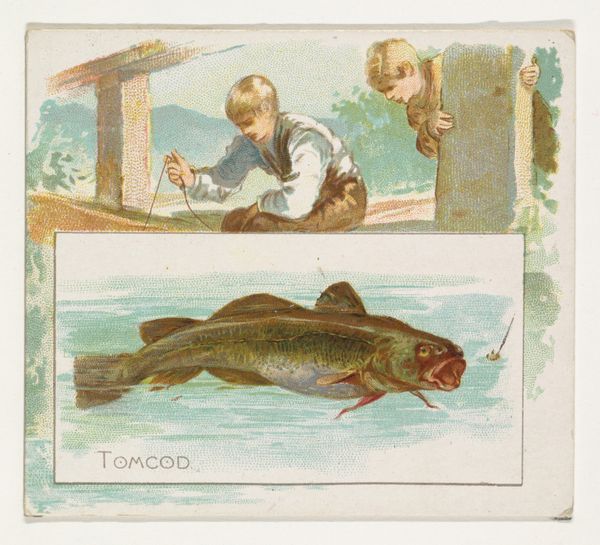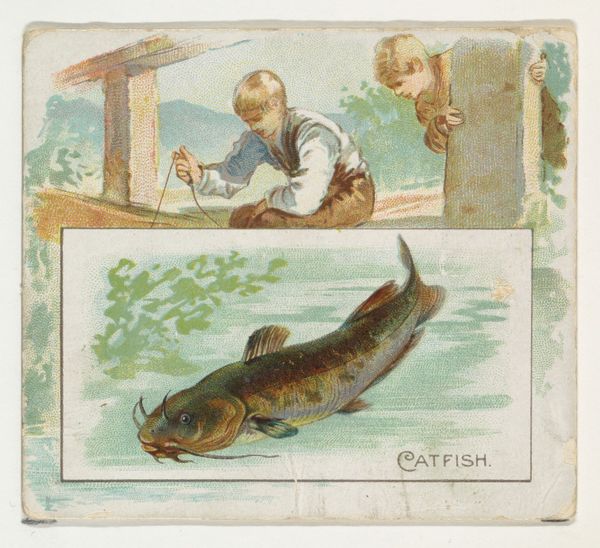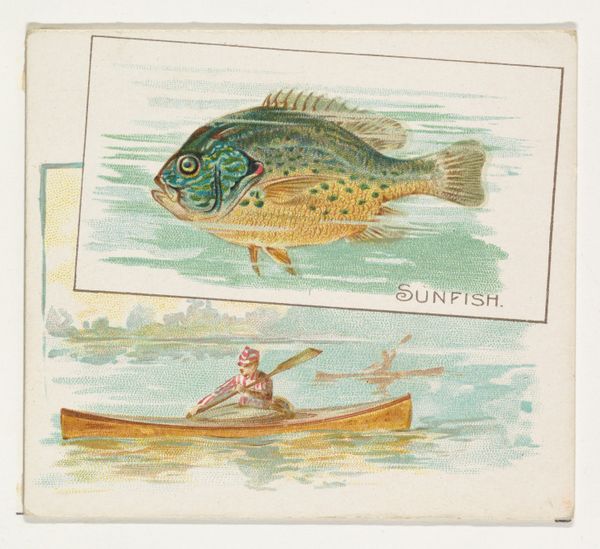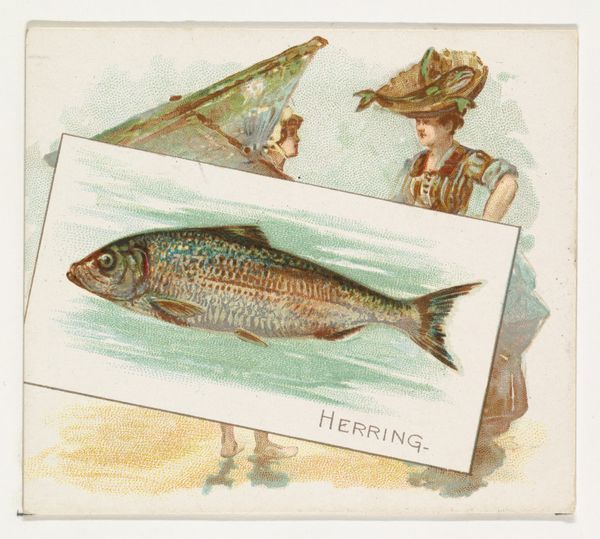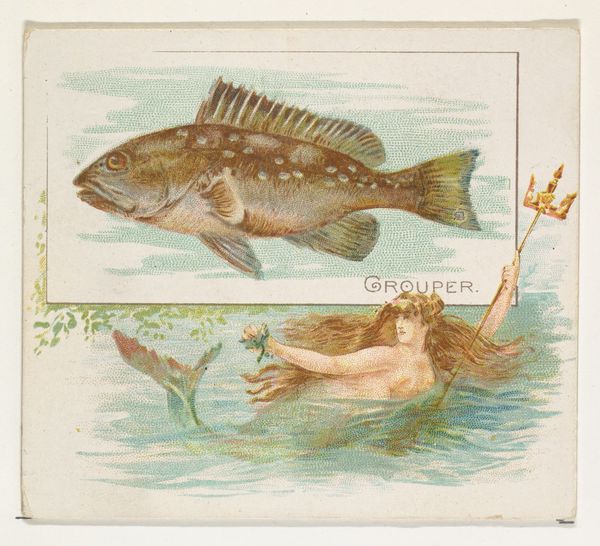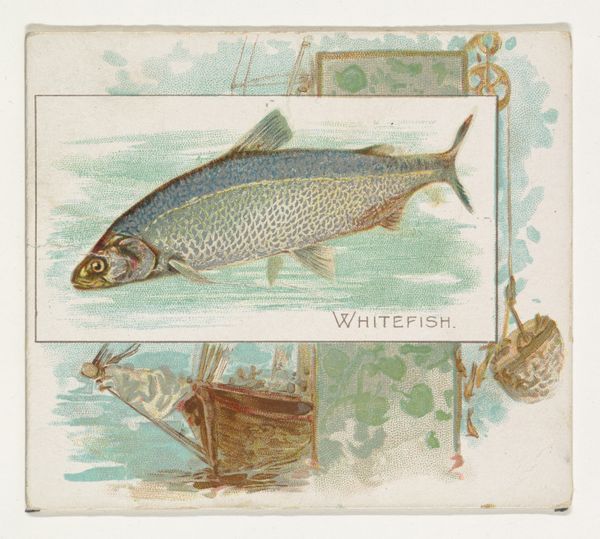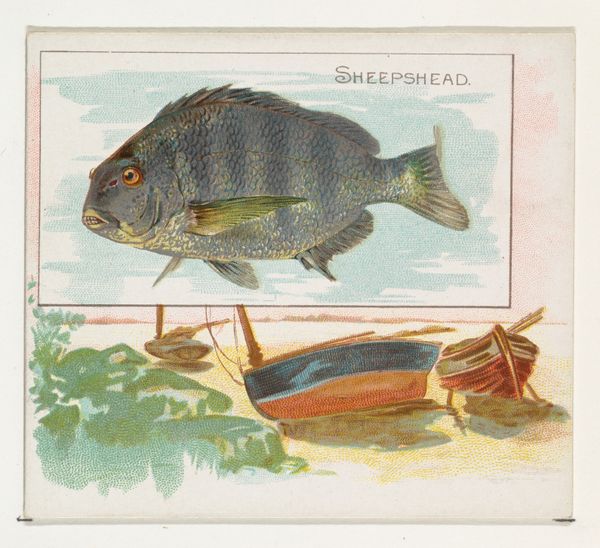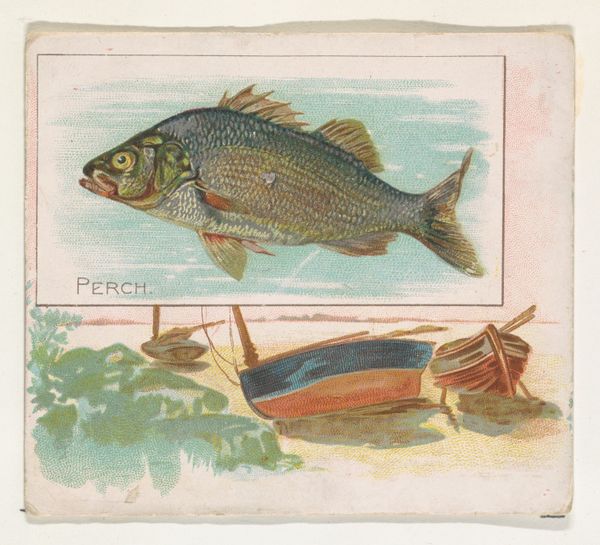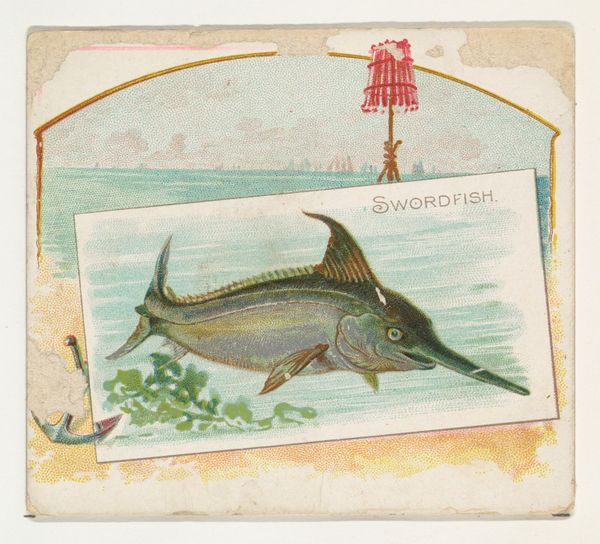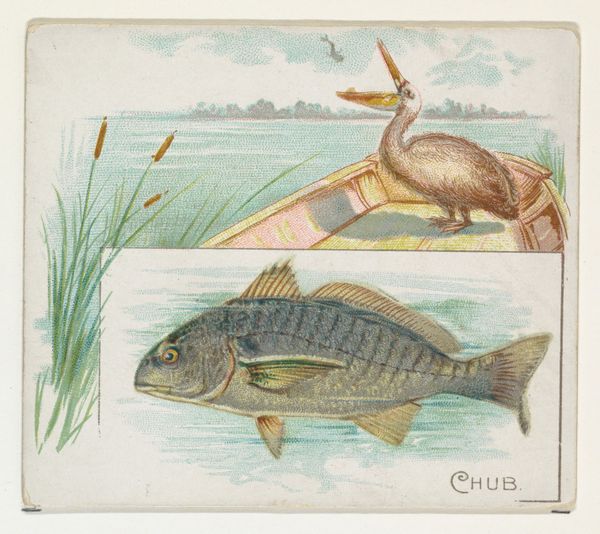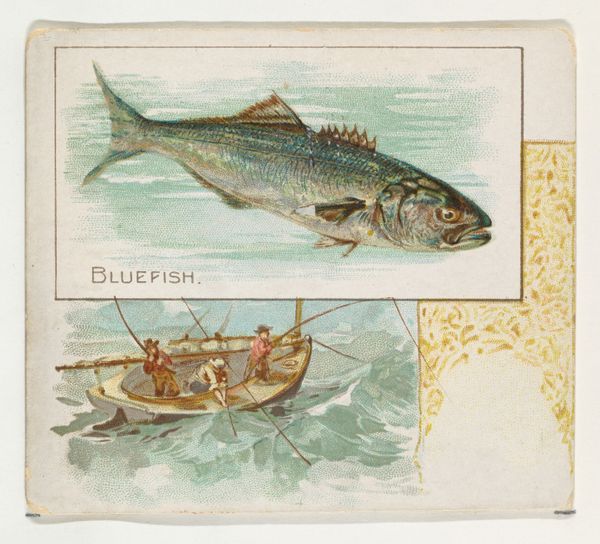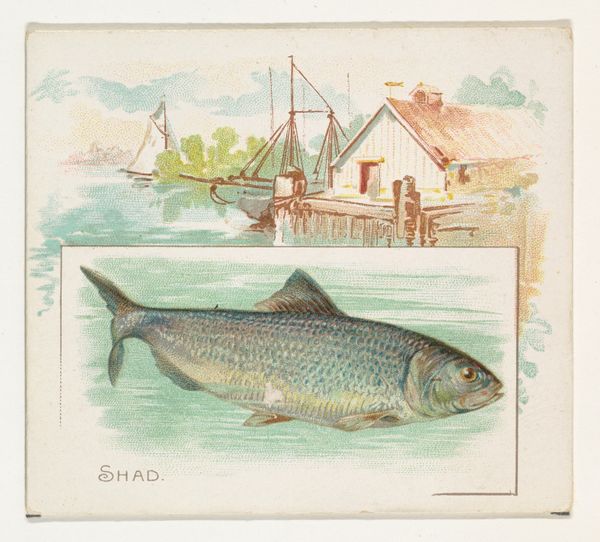
Codfish, from Fish from American Waters series (N39) for Allen & Ginter Cigarettes 1889
0:00
0:00
Dimensions: Sheet: 2 7/8 x 3 1/4 in. (7.3 x 8.3 cm)
Copyright: Public Domain
Editor: So, this is "Codfish," a colored pencil drawing from the "Fish from American Waters" series, created in 1889 by Allen & Ginter. I find the juxtaposition of the realistic codfish with the idyllic scene above quite striking. What catches your eye when you look at this piece? Curator: It's fascinating to consider this within the context of late 19th-century commercial art. Allen & Ginter were cigarette manufacturers. These cards were essentially advertisements, inserted into cigarette packs. Given that, it raises questions about the image's intended audience and the messages it conveyed about American identity and leisure. Editor: So, these weren't necessarily targeting art collectors. How does that shift our understanding of it? Curator: Absolutely. It speaks to a broader trend of using art for popular consumption. How did the social and cultural norms affect who they were trying to reach with it, and how were the codfish tied into ideas about American natural resources and consumption habits, I wonder. Were these images designed to evoke a sense of abundance and prosperity associated with American waters, or were they simply collectibles? Editor: It's interesting to consider the symbolic weight given to the codfish itself, beyond just being an identifiable fish species. What about the depiction of the woman, though? Curator: Right. It’s hard to ignore how she almost looks like an allegory, perched on the rocks in her garb as if observing the fish that are plentiful in the seas. We must ask ourselves about the ideals of femininity they represent with these visual objects that could easily be put into the hands of a wider audience, and even consumed with ease. How might the reception and impact of art change as institutions develop with industrial advancements? Editor: I never thought about how much cigarettes, advertising and visual art have always been subtly interwoven. Curator: Exactly. It allows us to view the print beyond just a pretty picture. We can now see it for the ways in which it was used and, arguably, a way of manipulating a general populace into adopting certain social mores. Editor: Wow. Now, I have so many more avenues of thinking to delve deeper into!
Comments
No comments
Be the first to comment and join the conversation on the ultimate creative platform.
